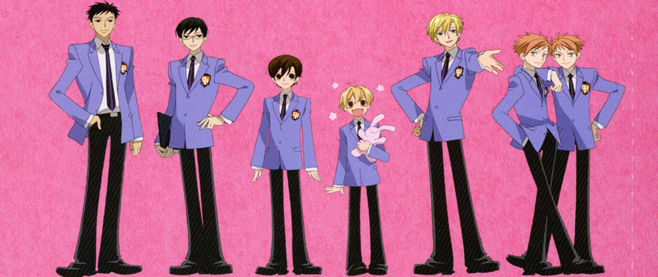
No Such Thing As Bad Anime
I just powered my way through all 26 episodes of an anime that was completely devoid of philosophical depth, utterly substandard in artistic quality and about as emotionally mature as the 11-year-old girls that make up its target audience. Oh, and did I mention that I loved it?
This isn’t the first time I’ve experienced an addictive high in the presence of poor art, but there is something unique, something well beyond a pathetic irony to this sensation in the presence of “bad” anime. Having put bad in quotes, I suppose I should elaborate on the markers that usually make me write a show off in the first few episodes.
I have very little patience for the easy, overtly cutesy use of such anime tropes as the exaggerated sweat drop, the anger # or the moody, dark blue shading of the eye region. I’ve always felt that if a show couldn’t get its emotional range across in the writing, drawing and acting, then it wasn’t worth its salt. This was small-minded of me, and it took a group of high school-aged, homoerotic male escorts to open my eyes.
I’m referring, of course, to Ouran High School Host Club, a campy, unexpectedly smart piece of animation based on the manga by Bisco Hatori. Ouran High is a private academy for the super-rich, and the host club is a small collective of the school’s wealthiest, most attractive male students. They charge female students for “time spent” with the hosts. Despite the innuendo here, all of this time is spent in public (at least all that the series is willing to show), specifically in an old music room that the school had abandoned. It is to this very room that the show’s main character, Haruhi Fujioka, thinks she’s escaping for some quiet study. Surprised by the presence of the host club, Fujioka accidentally knocks over an expensive vase and, after being mistaken for a boy and given a makeover, has the opportunity to pay off her debt by hosting.
You see, Fujioka’s a commoner riding an academic scholarship to Ouran. Not only does this aspect of her character lend her to hilarious interactions with a lot of sheltered rich kids, it’s also one of the show’s brightest pieces of class commentary. Over and over again, Fujioka’s lifestyle is under the club’s microscope, as its members try to decode the fascinating world of the poor.
Fortunately, the show’s exploration of status and privilege don’t weigh it down, and oftentimes its class jokes are as much at the expense of the viewer’s classicism as they are at those of the Ouran’s super-rich. This kind of self-reflexivity runs through the show’s every current, never allowing you to fully settle into what should be a simple-minded route through gender-bent high school romance. And the strongest of these reflections is laid across those gender lines.
For shojo manga and anime, particularly that which could be classified as shonen-ai, or boys love, it’s not unusual to find an unbelievably high concentration of gay characters within a single community. That Ouran High School Host Club takes this common bit of ridiculousness and turns it on its head in the first episode is admirable. Nearly every member of the club is a potential romantic partner for Fujioka, both before and after they find out she’s a girl. What would have been, in the shonen-ai genre, the homo-normative love triangle (perhaps quadrilateral), becomes instead a simple, straight matter. And like all things about Ouran High, this bit of normalcy, this commonness, makes it uniquely worth watching.
———-
Keep track of the anime world’s worst/best @DPIWins.


